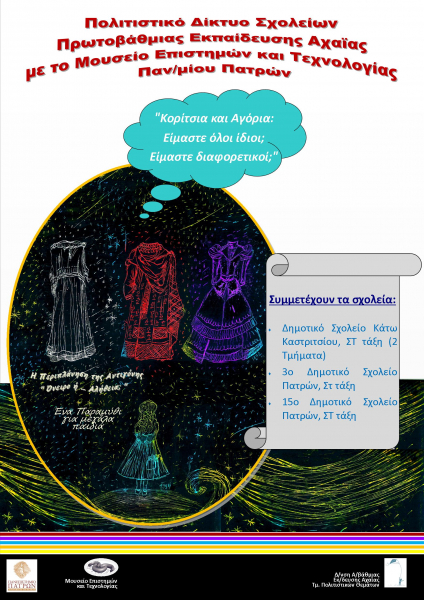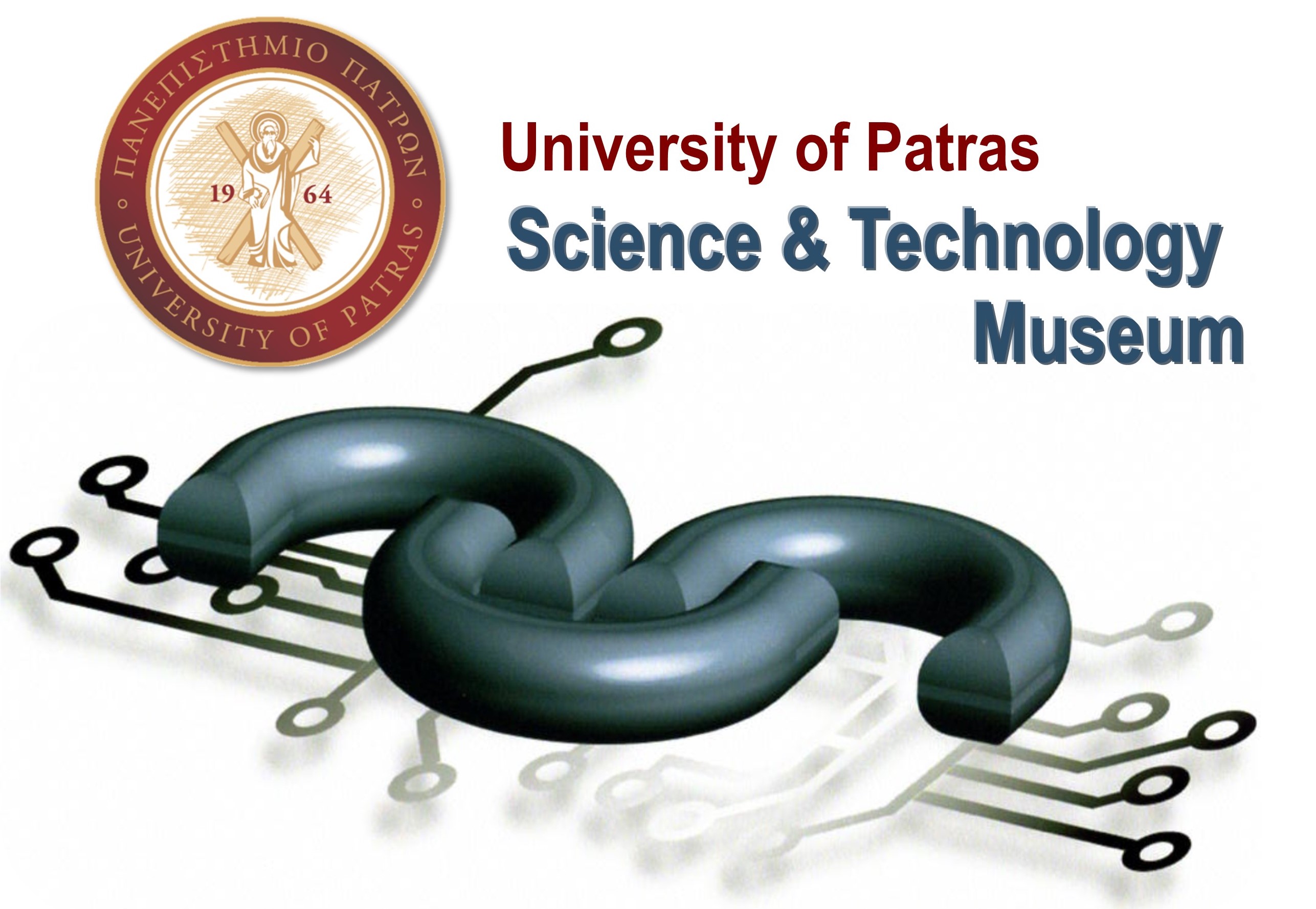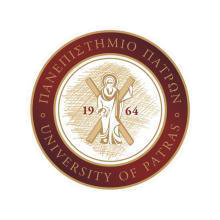- Home
- Activities
- Thematic Networks
- Cultural Network “Girls and Boys: Are we all the same? Are we different?”
Thematic Networks
- Home
- Activities
- Thematic Networks
- Cultural Network “Girls and Boys: Are we all the same? Are we different?”
Cultural Network “Girls and Boys: Are we all the same? Are we different?”

Science & Technology Museum, University of Patras Campus, Greece
The Thematic Cultural Network for Gender Sociology “Girls and Boys: Are we all the same? Are we different?” is organized by the Department of Cultural Affairs of Primary Education of Achaia and the Science and Technology Museum. Its general goal is for students to explore the role of their own gender and the opposite sex globally and through time.
SPECIFIC OBJECTIVES
1. COGNITION
- To explore gender roles
- To come into contact with their historical development
- To define factors by which roles are affected
- To understand the meaning of stereotypes
- To get to know the position of the sexes in the world
- To understand the relationship between genders, families, schools and society
- To come into contact with organizations, movements and bodies dealing with gender equality
- To understand the concepts of equality and social justice
2. SKILLS
- Be able to distinguish the way in which each gender is treated in different circumstances
- To be able to distinguish stereotypical perceptions, behaviors and inequalities
3. EMOTIONS
- To adopt a positive attitude towards both sexes
- Adopt non-stereotypical behaviors in their daily lives
- To accept the need for equal opportunities for both sexes
- To contribute to their microcosm of social gender justice
Activities of the Network:
1. Training Seminar
A 3-hour seminar meeting with Professor Asimaki of the Department of Education of the University of Patras for the training of the teachers involved (there will be a relevant briefing).
2. Theatrical performance
Students to attend a theatrical performance at the Science and Technology Museum on the position of women in various historical periods in Greece (a relevant date will be set).
3. Suggested activities in the classroom (Activities are recorded with an evolutionary logic, however, the responsible teacher will judge whether to follow this or another structure).
- Students create mind maps or participate in a brainstorming action about what they think is a boy and what a girl is (each for both sexes)
- The answers are indexed by the students and mixed working groups are created with convergent or divergent representations at the discretion of the teacher in charge
- Each student documents “'how he imagines himself in his 30s”
- Students comment on the play they attended
- Students look for old photos of women and men in the family and in the workplace and make comments
- Record interviews of men and women from their family and friendly environment, relevant experiences and events and comment on them
- They also study the old alphabet of primary school and record the roles attributed to men and women
- Students are given stories with expected or not endings to comment on and we ask them to suggest their own endings
Example:.A senior High School student wishes to become a kindergarten teacher. He loves children very much and likes to teach. His parents and their social circle are thrilled with the idea and everyone admires him for his choice. Comment on the story. Is this considered likely? In your opinion, how could this story end up?)
- The students search from the Press Museum of Patras for the 'ladies' diaries' and record the role of the woman and the man of that time
- A very good opportunity for the same discussion provide both literary texts and fairy tales
- Roles in team games
- The evolution of the garment and how it reflected the change of roles
- Study of customs that demonstrate the role of the sexes such as the custom of the dowry
- Gender and work: Students are given lists of occupations to distinguish them between females and males. When they do, there is a discussion about why this distinction is made, what dictates it and whether things could be different
- Following is the search and recording of real people in unexpected professions e.g. women in the air force, male nursery nurses, etc.
- Per group, the students present a case study of real people e.g. the first Greek student or the first female prime minister in the world, the first male kindergarten teacher
- Study of other countries and cultures, genders in the world (e.g. Scandinavia, Afghanistan, Saudi Arabia)
- Study of the Suffragette
- Presentation by children of organizations that promote gender equality
4. Concluding Network Action
All participants present their work in any content and way they wish (e.g. event, fairytale, photo exhibition, still images, etc.) at an event that will take place for the Celebration of Museum Day (May 18, 2014) at the Science and Technology Museum. The event will end with an experiential action-treasure hunt related to the topic.
List of Dates (Page event details)
- From 29 November 2013 to 31 May 2014
Powered by iCagenda
One Object Every Month
Announcements
Calendar
| Mon | Tue | Wed | Thu | Fri | Sat | Sun |
|---|---|---|---|---|---|---|
STM's Events
STM's Newsletter
Popular Articles
- Museum Water Kits
- Permanent exhibition "Telecommunications in our lives"
- The Science and Technology Museum at the Development Forum Network 2023 “University of Patras, Science and Technology Museum: Interacting with Society”
- Awarding schools in the Local Photography Competition “Capturing the water systems of my country”.
- The Second Digital Exhibition of Virtual Reality (VR) of the Science and Technology Museum is a fact!!!












